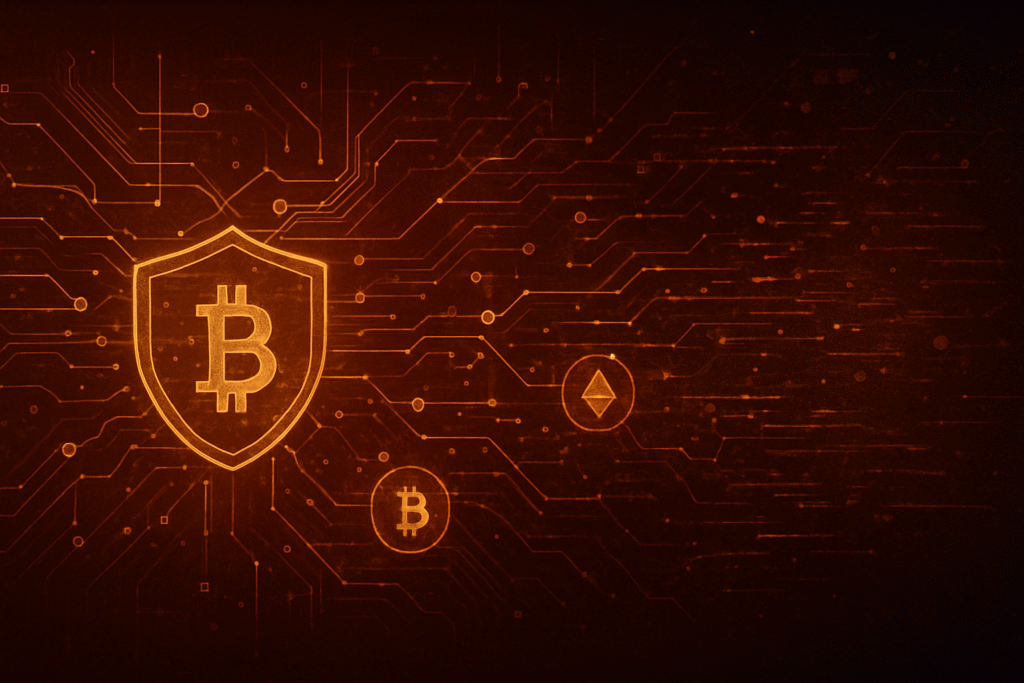
The cryptocurrency ecosystem, a realm often characterized by rapid innovation and equally swift challenges, finds itself at a pivotal juncture in November 2025. While groundbreaking advancements in cryptographic techniques and platform architecture are significantly bolstering transaction and asset security, the specter of sophisticated exploits, pervasive scams, and looming technological threats continues to test the fundamental trustworthiness of digital assets. This dynamic interplay between progress and peril defines the current landscape, shaping investor confidence and the trajectory of mainstream adoption.
The ongoing battle is not merely a technical one; it's a fight for the very soul of decentralized finance and Web3. Each successful security implementation, from the enhanced privacy of Zero-Knowledge Proofs (ZKPs) to the robust resilience of Multi-Party Computation (MPC) wallets, pushes the industry forward. Yet, every smart contract exploit, every rug pull, and every new wave of AI-powered fraud serves as a stark reminder of the inherent risks and the continuous need for vigilance. The market's reaction to this seesaw of security and vulnerability is often a reflection of broader sentiment, with periods of heightened innovation attracting capital, while significant breaches trigger caution and a flight to perceived safety.
Market Impact and Price Action
While the current discussion revolves around the general state of security rather than a singular market-moving event, the cumulative effect of security advancements and challenges profoundly influences market dynamics. Enhanced security measures, such as the maturation of institutional-grade custody solutions (with an estimated annual spend of $16 billion in 2025 by institutions prioritizing regulatory compliance and SOC 2 Type II certifications), directly contribute to increased institutional confidence and capital inflow. This often translates to a more stable and mature market, potentially cushioning against extreme volatility. The growing reliance on qualified custodians, often offering insurance up to $150 million per wallet, signals a significant step towards de-risking large-scale crypto investments, thereby attracting traditional finance players and fostering long-term price appreciation for established assets.
Conversely, persistent security failures, particularly high-profile smart contract exploits that resulted in $720 million in losses in Q3 2023 alone, or the nearly $6 billion lost to rug pulls in early 2025, tend to erode retail investor confidence. Such events can trigger sell-offs, decrease trading volumes, and lead to a temporary liquidity crunch as participants become wary. While individual token prices may not react uniformly to every security headline, the overall market sentiment, particularly for DeFi protocols and newer projects, is heavily swayed by the perceived security posture. A secure ecosystem encourages sustained investment and growth, while a perceived insecure one can lead to stagnation or even decline, regardless of underlying technological merit.
Community and Ecosystem Response
The crypto community's response to security and trust issues is multifaceted, characterized by both proactive efforts and reactive discussions. On one hand, there's a strong push for transparency and open-source development, with initiatives like the OWASP Smart Contract Top 10 (2025) serving as a community-driven standard for identifying and mitigating prevalent vulnerabilities. Bug bounty programs have become an indispensable tool, incentivizing white-hat hackers to uncover flaws before malicious actors can exploit them. Influencers and thought leaders actively engage in discussions surrounding best security practices, advocating for self-custody solutions, the adoption of hardware wallets with biometric authentication, and the use of multi-signature (multi-sig) capabilities.
However, the community also grapples with the fallout from persistent scams and exploits. Social media platforms like Crypto Twitter and Reddit often become forums for sharing warnings about phishing attacks, impersonation scams leveraging large language models (LLMs) and deepfakes, and the devastating impact of rug pulls. The sentiment can quickly turn negative after major security incidents, leading to widespread calls for greater accountability, improved auditing standards, and more robust consumer protection mechanisms. The ongoing challenge lies in educating a diverse user base, from seasoned traders to new entrants, about the complex risks inherent in a rapidly evolving digital landscape.
What's Next for Crypto
The future of crypto security and trust hinges on several critical developments and strategic considerations. Short-term, the continued adoption and refinement of Zero-Knowledge Proofs (ZKPs) and Multi-Party Computation (MPC) will be paramount. ZKPs are expected to further enhance privacy and scalability, particularly in Layer 2 solutions, making transactions more efficient and confidential. MPC, with its ability to eliminate single points of failure in key management, will likely become the standard for institutional and enterprise digital asset management.
Long-term, the looming threat of quantum computing demands urgent attention. With experts predicting a 50-70% chance of quantum computers breaking current cryptographic systems within 5 to 30 years, the transition to post-quantum cryptography (PQC) is no longer a theoretical exercise but an existential necessity. The National Institute of Standards and Technology (NIST) is leading standardization efforts, and U.S. federal agencies are mandated to adopt PQC by 2035. The crypto industry must proactively integrate these new algorithms to safeguard assets against future quantum attacks. Furthermore, the fight against AI-powered fraud will intensify, requiring innovative AI-driven security solutions to counter increasingly sophisticated scams and malware generation. Finally, regulatory clarity, exemplified by frameworks like the EU's Markets in Crypto-Assets (MiCA) regulation, will be a crucial catalyst for trust and mainstream adoption, providing a stable environment for innovation while protecting consumers.
Bottom Line
For crypto investors and enthusiasts, the key takeaway is that security is not a static state but an ongoing, dynamic process. While the industry is making significant strides with technologies like ZKPs, MPC, and advanced hardware wallets, the threat landscape is evolving just as rapidly. Vigilance, continuous education, and the adoption of robust personal security practices remain paramount.
The long-term significance of these developments cannot be overstated. The ability of the crypto ecosystem to effectively address security challenges and foster trust will directly influence its trajectory towards mainstream adoption and integration into the global financial system. Important metrics to monitor include the rate of adoption of new cryptographic primitives, the success rate of bug bounty programs, the frequency and impact of major security breaches, and the progress of global regulatory harmonization. The ongoing arms race between security innovators and malicious actors will define the future of digital assets, making proactive security measures and a commitment to trust-building essential for sustained growth and resilience.
This article is for informational purposes only and does not constitute financial or investment advice. Cryptocurrency investments carry significant risk.

















